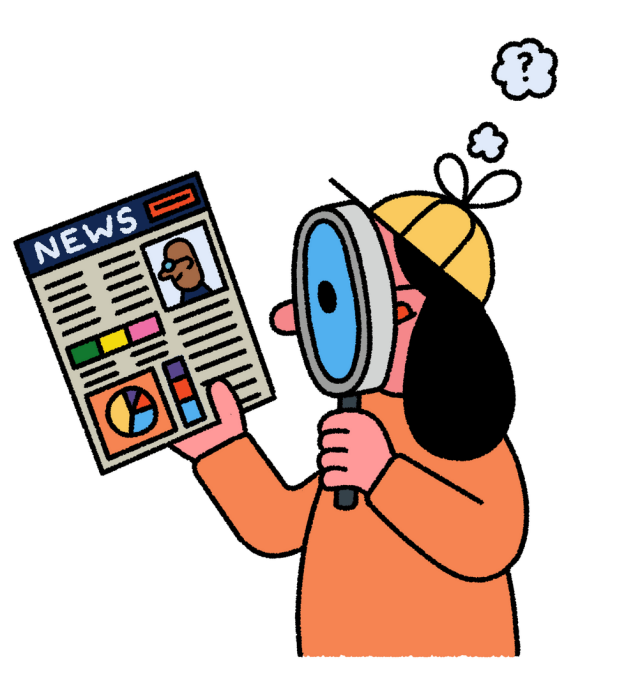NewsWise values
This lesson focuses on the NewsWise value: truthful.
Learning objective
To find important details in a news report.
Journalists need to be able to spot the most important or interesting parts of a story so they can tell their audience about them. Journalists always need to know the 5Ws (who, what, where, when, and why) of a story.

This lesson focuses on the NewsWise value: truthful.
To find important details in a news report.
Explain what a news story is about.
Identify the 5Ws in a news story.
Categorise news stories.
[10 minutes]
Explain to pupils that when a journalist chooses a story, they need to know the 5Ws. These stand for who, what, when, where and why.
Read the Starter report to the class. Allow time to answer any questions and define unfamiliar words.
Present each statement in the 5Ws quiz. Pupils vote whether each is true or false. Pupils could use thumbs up/down, mini-whiteboards or pre-prepared voting cards for this.
[10 minutes]
Read the Starter report aloud to the class and model giving your initial reactions to it by responding orally to the questions:
What did you find interesting or surprising about this report?
What is one thing from this report that you want to learn more about?
Provide all pairs with one of the Class reports. Pupils read their report together and take turns to respond to the same questions with their partner. As pupils explore the stories, ask questions to deepen their thinking: Which story would you want to read the most? Why would that story appeal to you? What makes this an important/interesting/entertaining story?
[20 minutes]
Model identifying the 5Ws in the Starter report. (Using a visualiser, a flipchart or classroom whiteboard will allow pupils to see how these should be recorded.)
Give pupils the 5Ws note catcher. Pairs work together to identify and record the 5Ws in their report.
[10 minutes]
Look at each of the stories, inviting one pair to explain what their story is about and what they think the 5Ws are. Encourage good listening skills from the rest of the class as they will need to refer to these during the plenary.
[10 minutes]
Show the five categories of news and explain what each means. Use questions to check pupils’ understanding: If there was a story about… what type of news could it be?
Pupils discuss in pairs or small groups which of the stories from Class reports fit into each of the categories. Lead a class discussion to allow pupils the opportunity to share their ideas with the rest of the class.
What is this news story about? How quickly could you tell what the story was about? What helped you to understand what it is about?
What are the most important facts that a reader needs to know? Why are these the most important?
Who was involved in this story? What happened in this story? When did this story happen? Where did this story happen? Why did this story happen?
Which category of news does this story fit into? Why is it not [different category]? Could it fit into more than one category? Why could it be useful to put news in different categories?
All news reports (written or broadcast) include the 5Ws (who, what, when, where, why) at or near the start of the report. These are the most important details that a reader needs to know, so it is important that they come first.
Journalists should be able to explain their story in a clear, concise way. This means they can tell their audience about it in a way that is easy to understand. It also allows them to explain to an editor or producer what they are writing about and why it is important.
Mini whiteboards and markers, or voting cards (optional)
English
Reading: summarise texts; retrieve information from texts
Oracy: take part in discussions